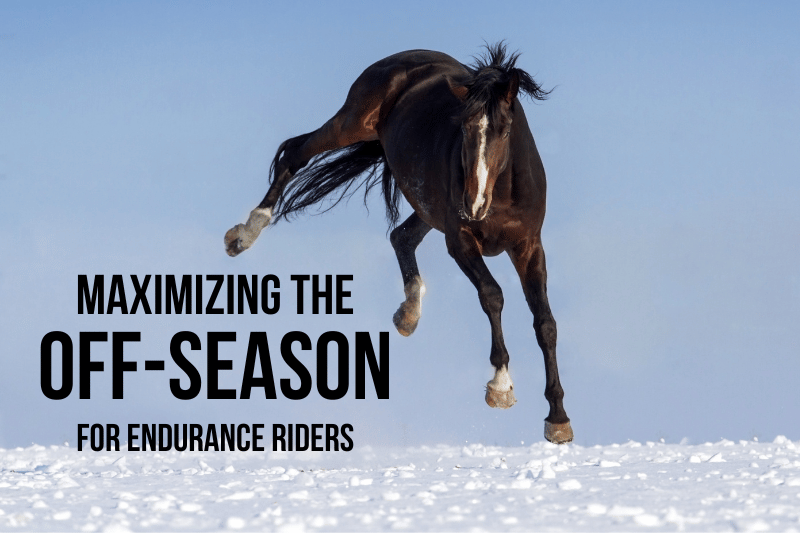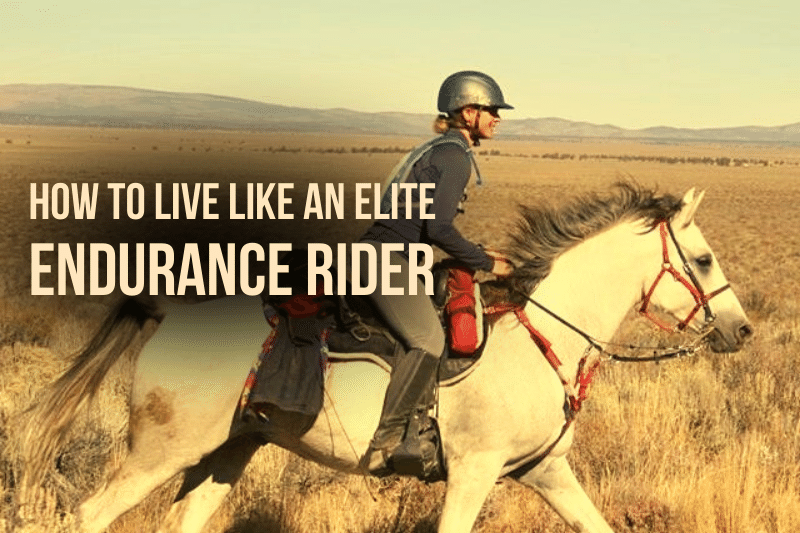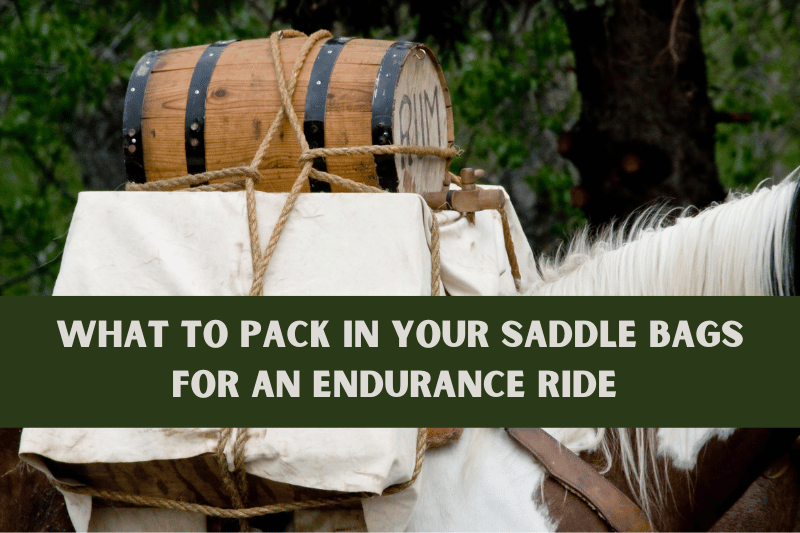The equestrian endurance riding off-season is your opportunity to improve. Now is the time to reflect on last season and solve any issues for a better experience next year.
On January 17, 2023, the Old Dominion Equestrian Endurance Organization offered a webinar about Maximizing the Off-Season. The presenters generously spent two hours of their evening sharing down-to-earth wisdom we can all apply.
They included:
Lani Newcomb, DVM: Endurance vet, endurance rider, ride & tie competitor, and ODEEO board member
Teri Carroll: Endurance rider and ODEEO board member
Diane Connolly: Endurance rider, ride manager, and ODEEO board member
Sonja Knecht-Hoshi: Endurance rider and ODEEO board member
Bob Walsh: Endurance rider and ODEEO board member
Dave Franklin: Endurance rider and ODEEO board member
My notes below are organized topically, rather than following the chronological flow of the presentation. I’ve captured the high points, but there’s more to glean from listening to the full presentation. I highly recommend watching it on ODEEO’s YouTube.
Lani opened the conversation by asking an overarching question: What caused you stress last season?
Was it driving to the rides? Controlling your horse? Riding in a group? Fear of non-completion? Soundness issues?
She reminded attendees that endurance is supposed to be fun. We can use the off-season to relieve stress for next year.
How? Here is the panelists’ advice:
Plan for Next Season
Identify Your Goal Ride ~ Teri recommended looking at the calendar and picking your highest-priority ride for the year. That will enable you to count back through the weeks and other events to formulate a preparation plan.
Identify Backup Opportunities – You never know what’s going to happen. Your goal ride plan might fall through. If it does, you’ll feel better about it if you have another idea in your back pocket.
Teri recommended volunteering as both a primary and backup goal. It’s an excellent learning opportunity that you should go out of your way to include on your calendar.
Evaluate Tack and Equipment – Diane encouraged attendees to spend part of the off-season going through tack and equipment. Clean out saddlebags. Make sure “spare tire” boots still fit your horse. Go over saddles, breastcollars, bridles, etc. and take care of any needed repairs. Note any white hairs on your horse that might indicate the need for a different saddle, new flocking, or fresh pad.
Sonja added that camping is a big part of endurance, and having the right equipment makes it go more smoothly. Consider what worked well and what might be handled more efficiently.
She suggested evaluating everything from your horse containment system to buckets and feed pans. Refresh supplies of consumables like poultice and electrolytes. For the humans, address any issues with cooking supplies, camp chairs, and alarm clocks. Definitely solve any issues you might have had sleeping comfortably in camp. Quality rest before a ride is crucial.
Perform Vehicle and Trailer Maintenance — Bob and Dave reminded attendees that winter is a good time to maintain your truck and trailer. Check the batteries, brakes, bearings, fluids, belts, hoses, lights, and electrical system.
Make sure your tires (including the spare) have appropriate air pressure. Underinflation is a common cause of tire failure at highway speeds. Check your trailer hitch for wear, and make sure the breakaway chains are in working order.
They noted that older trailers with wooden floors need to have the mats pulled to check for rot underneath. Remove shavings, and perhaps the mats as well, to let trailer floors dry over the winter.
Lani added that winter is a great time to practice changing tires. Not only will you make sure you know how to do it, but you’ll confirm that you have the right tools for the job. You’ll need a different lug wrench than the one for your truck, and possibly yet another to get the spare off. Have a 3-foot breaker bar. Know where your jack is. After practicing, be sure to pack these items where they can be easily accessed along the side of the road.
Finally, fix the things that made you grumpy during the year. Add lights and hooks that you needed. As Lani said, “You can fix anything if you just take the time to do it.”
Practice Ride Day Skills – Lani encouraged riders to prepare their horses for smoother vet checks. Teach your horse to trot out well using a consistent cue. Have strangers handle him, including his head and feet. Get him accustomed to the stethoscope. When ride season rolls around, his heart rate will be lower in checks because he’s familiar with the process.
Expose Your Horse to Changes – If you’re planning to make changes that’ll directly affect your horse, introduce them now. Let him spend time in a new containment system so he (and you) understand how it works before you’re in camp. Introduce new feeds and supplements now, when eating is less critical than it will be during competition. If he needs practice syringing, get him used to it with something tasty. Teri noted that peanut butter powder makes an appealing paste for self-mixed electrolytes.
Get Ahead of Veterinary Needs ~ Lani urged riders to take care of their horses’ vaccines and Coggins during the winter. Soundness exams should be performed early on to leave many weeks for resolution; often, horses need more than just time off to get past a nagging issue. She also recommended a blood test for horses on hay or winter pasture, as they tend to be low in Vitamin E. Elevate is a quality Vitamin E supplement.
Work on Feeling Better Physically
Improve Personal Fitness ~ The presenters emphasized the importance of being an athlete who is strong for your horse. Sonja said engaging in athletics makes us more empathetic partners, and Lani observed that being able to keep up with your horse is more fair to him and more fun for you.
Diane, who is recovering from shoulder surgery, shared her goal to be better shape when she gets back on her horse than she was before the surgery. She asked, “Are you going to be a couch potato, or are you going to find a way to improve?” From walking to chair yoga, you can do something to be more fit for your horse come spring.
Lani emphasized that you need to be physically fit, rested, and hydrated when you get to the start line. “If you fizzle out,” she said, “Your horse has no chance, no chance at all.”
Additionally, you need to be able to hike if something is wrong with your horse. Tired horses can recover if you get off and walk for an hour. It’s slow enough that they can eat and rest. Being fit enough to do that ~ with no excuses for heat, hills, or bad knees ~ could salvage your ride.
Dave pointed out that trail maintenance is great exercise that also serves the community while giving you a chance to make new friends and learn a new trail system.
Teri advised, “This is the time of year when you can look and the mirror and decide whether you’re the person you want to be…physically and mentally.”
Problem-Solve for Ride Day ~ Lani encouraged riders to work on making sure they feel good before, during, and after a ride.
Check whether your clothing will rub, especially if you lost weight over the winter.
Find a way to eat and drink. Low blood sugar has a way of making riders unpleasant to vets, volunteers, and crew. Even if you “can’t eat when you exercise,” learn to swallow one bite of PBJ or a can of Ensure.
Figure out how to finish off your water bottles on each loop. If you’re worried about having to pee the whole time, drink them when you know you’re approaching the vet check. Be sure to get enough electrolytes even if the day isn’t particularly warm.
Use the Off-Season to Learn
Read ~ Sonja urged riders to intentionally increase their knowledge base. She recommended reading one of my 5 Top Books for Endurance Riders, Nancy Loving’s Go the Distance, in addition to Endurance News and the AERC and ODEEO websites. Attend clinics and events both in-person and online.
Lani recommended reading the AERC rulebook annually. This will reduce stress because you’ll know what to do at the ride. “The more you know, the more relaxed you are, she said.” Getting through vet checks quickly is a gift of time to your horse, and failure to educate yourself penalizes him. “Give your horse the gift of your intelligence.”
Practice Using a Stethoscope ~ Lani said all riders should know how to take their horses’ heart rates. She suggested buying several, inexpensive stethoscopes and getting familiar with their use.
Explore Other Riding Disciplines ~ Additionally, take riding lessons and cross-train your horse. Experiment with obstacles and playdays. Arena work reduces stiffness and lightens the forehand heaviness that comes from always going in a straight line. Poles and circles improve gaits and balance.
“You don’t have to be good at dressage, “Lani said. “You just need to admit that you need to be able to do something besides go straight down the trail.”
Take Time Off with Purpose
Sonja reflected on the value of taking a cue from the natural world. It’s okay to slow down. Pleasure ride without worrying about conditioning. Spend time with family members who got less of your attention during the ride season. Trust your horse’s physiology to maintain his fitness, and let your mind take a break.
“There’s no way you’ll ever know everything,” Teri concluded. “The key is approaching this sport with an open mind, open eyes, open heart, and a really good sense of humor. Everything that happens is just an opportunity to learn.”
You might also like
This page includes affiliate links, and I may earn a small commission (at no extra cost to you) when you purchase through these links. I only recommend products and services I think are helpful and useful. Thanks for helping me offset the cost of maintaining this blog as a free resource!



